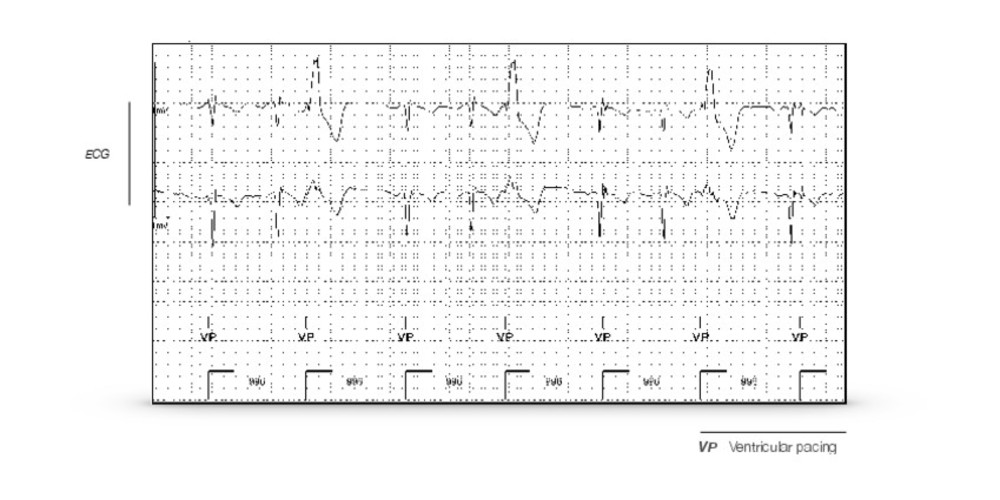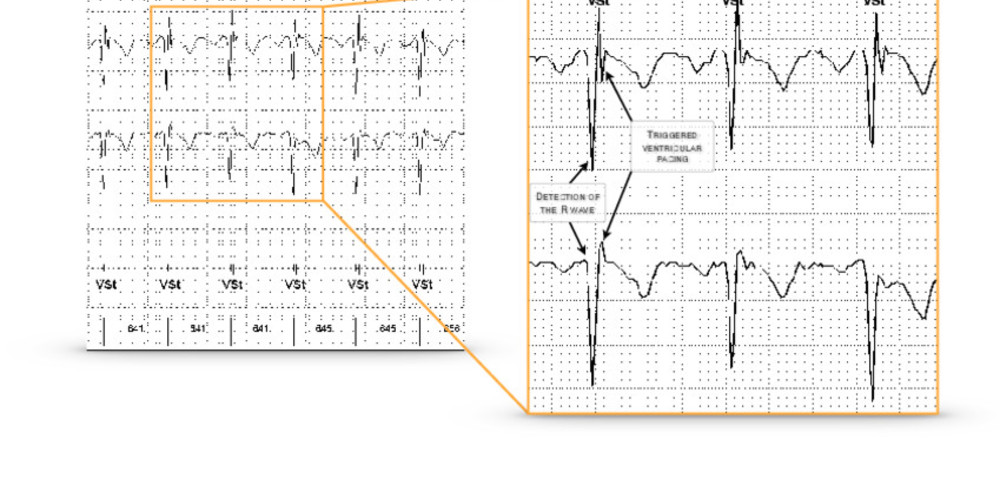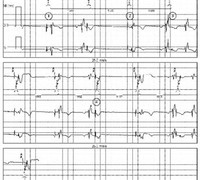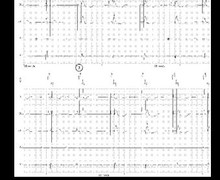asynchronous AOO, VOO and DOO modes
Tracing
Manufacturer Abbott
Device PM
Field Pacing Modes
N° 2
Patient
Same patient as in tracing 1; change of pacing mode (the leads function normally).

Graph and trace
Programming in VOO mode 60 beats/minute; fixed-rate asynchronous ventricular pacing without sensing of intrinsic atrial or ventricular events; there is no capture after ventricular pacing when it occurs immediately after intrinsic ventricular activity (refractory period of the ventricular myocardium); on the other hand, effective ventricular capture when the pacing occurs remotely from the intrinsic QRS, with pacing occurring at the peak of the T wave (proarrhythmic risk).

Other articles that may be of interest to you






Fixed-rate asynchronous modes were the only available modes on the initial first-generation pacemakers. The VOO mode induces sequential asynchronous ventricular pacing, without inhibition by intrinsic events. As seen on this tracing, when the patient is not pacemaker-dependent, parasystole occurs with competition between intrinsic activity and paced activity. This mode allows verifying pacing effectiveness and to avoid inhibition in the event of exposure to external interference (electric scalpel in a pacemaker-dependent patient for example). Pacing is effective and captures ventricular activity only when it occurs outside the physiological absolute ventricular refractory period following an intrinsic ventricular event.
This tracing illustrates the risk of this type of mode. Several ventricular pacing pulses occur at the peak of the T wave of an unsensed intrinsic QRS. This is the vulnerable period with risk of induction of a ventricular rhythm disorder. The risk of ventricular fibrillation is limited, although increases in the presence of myocardial ischemia or metabolic disorders. Similarly for AOO or DOO modes, asynchronous atrial pacing in the vulnerable atrial period can induce atrial fibrillation.
Asynchronous modes are nowadays obsolete and are only used in 2 specific circumstances: 1) in magnetic or magnet mode; indeed, the application of a magnet causes AOO, VOO or DOO pacing according to the programmed mode; 2) the asynchronous modes can be programmed temporarily for device-dependent patients with an MRI-compatible pacemaker scheduled to undergo an MRI exam.